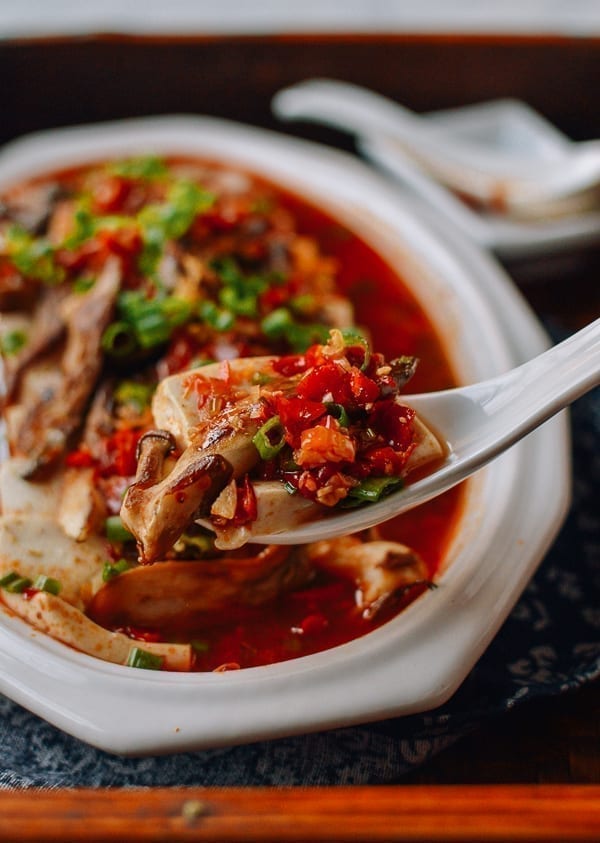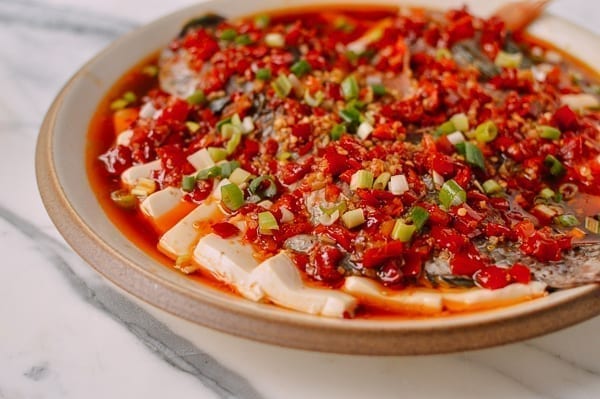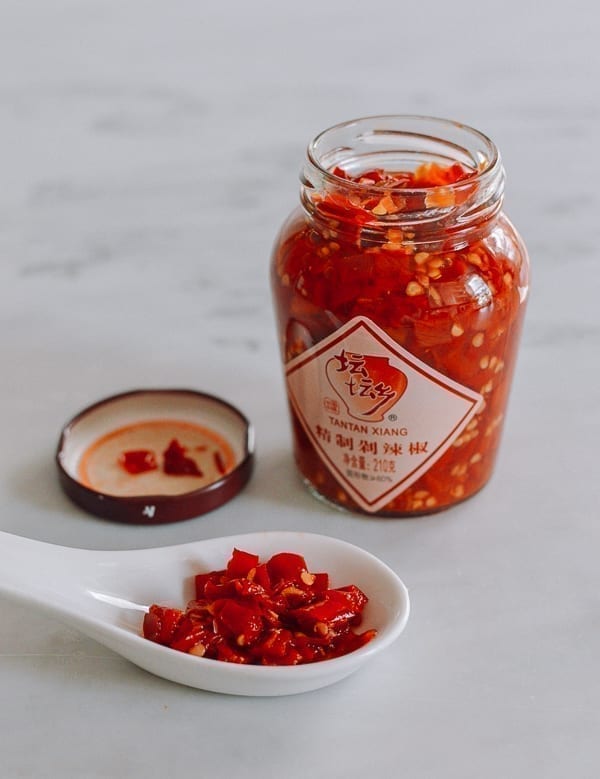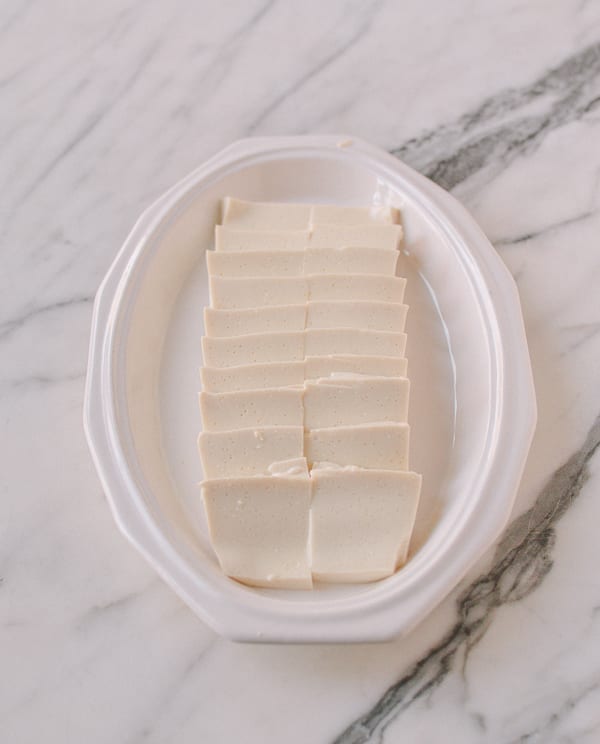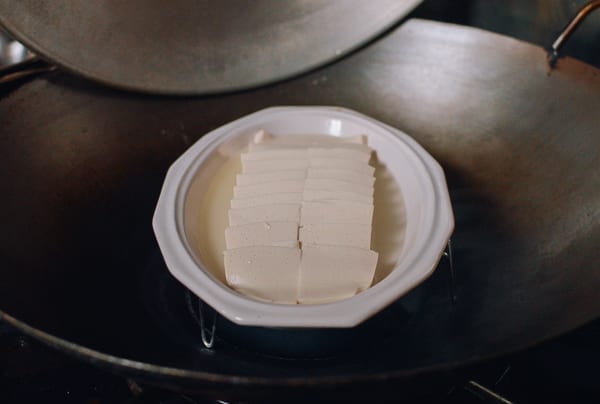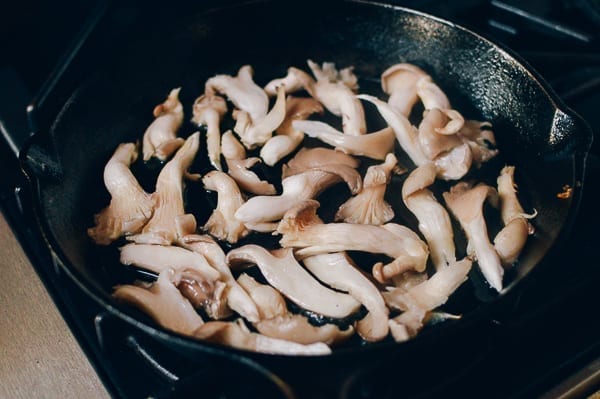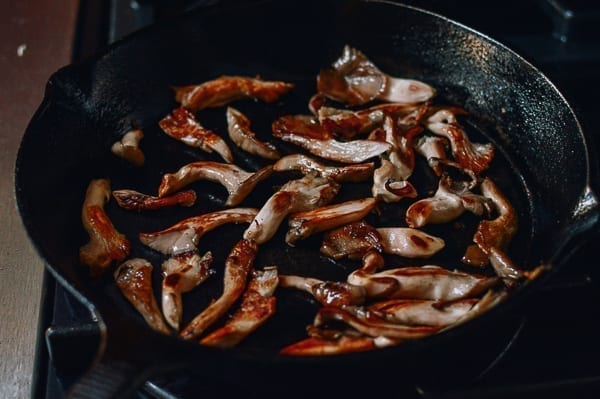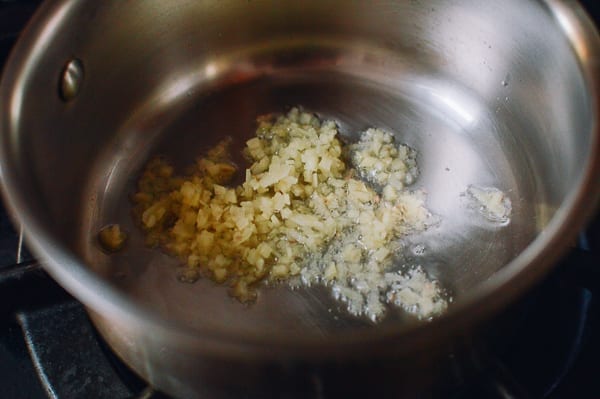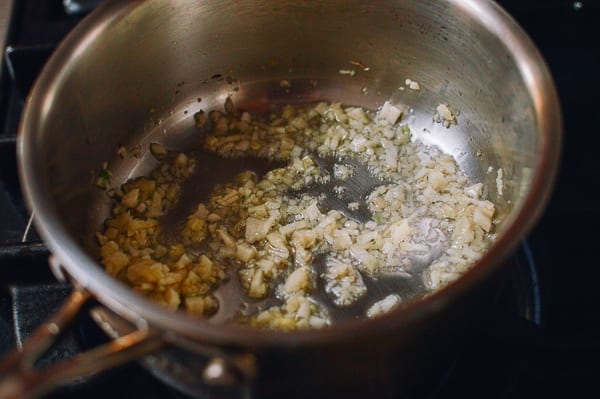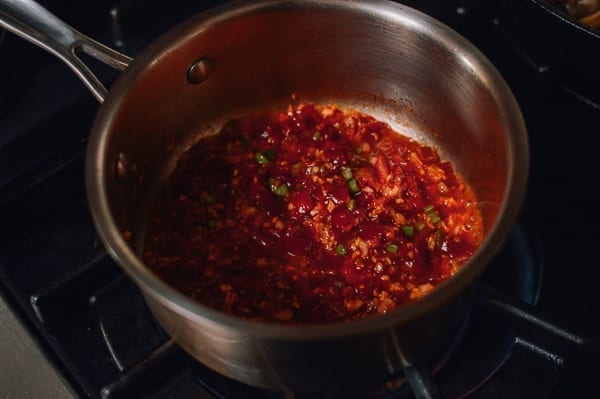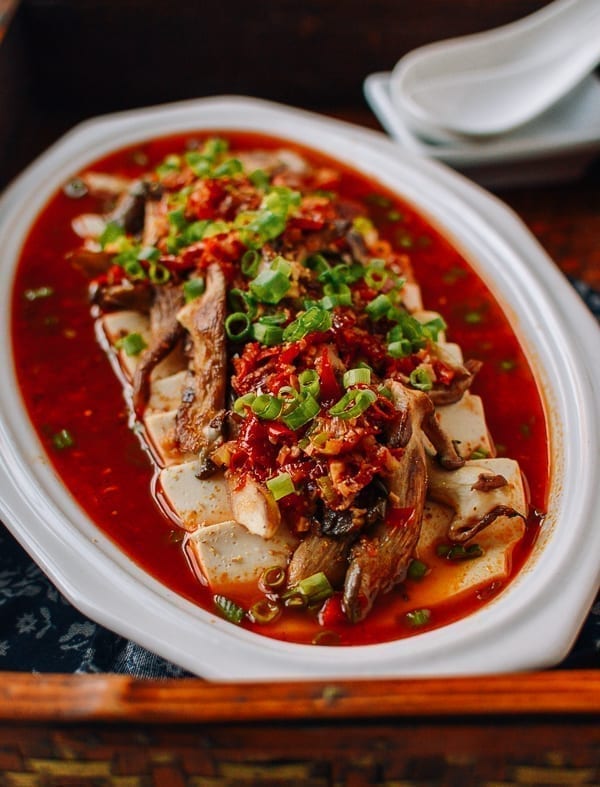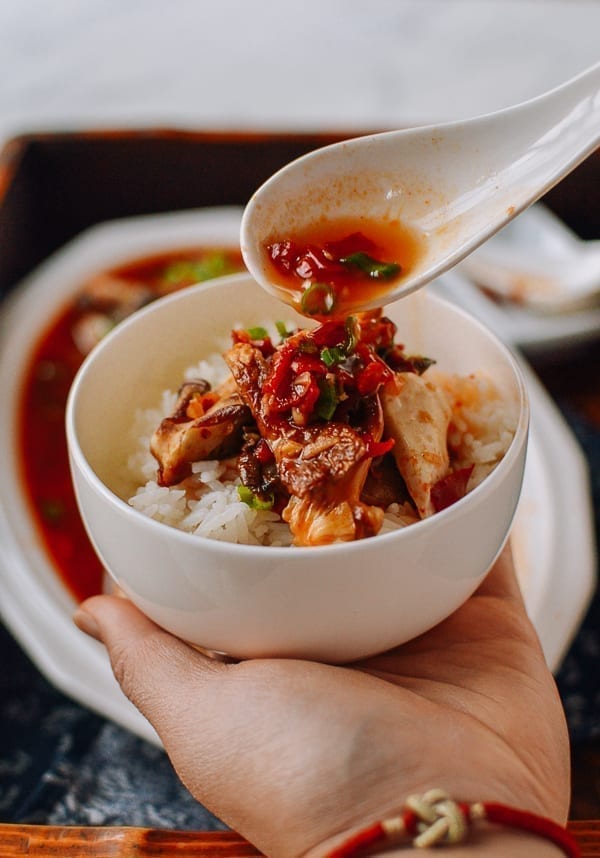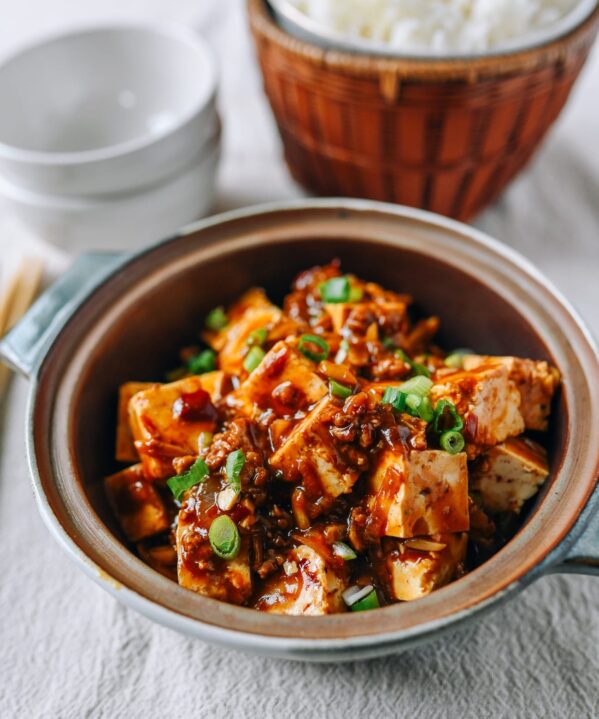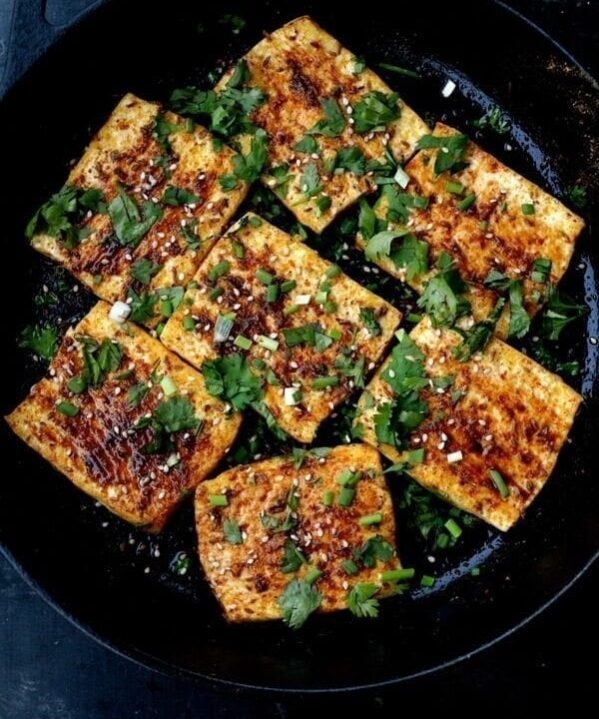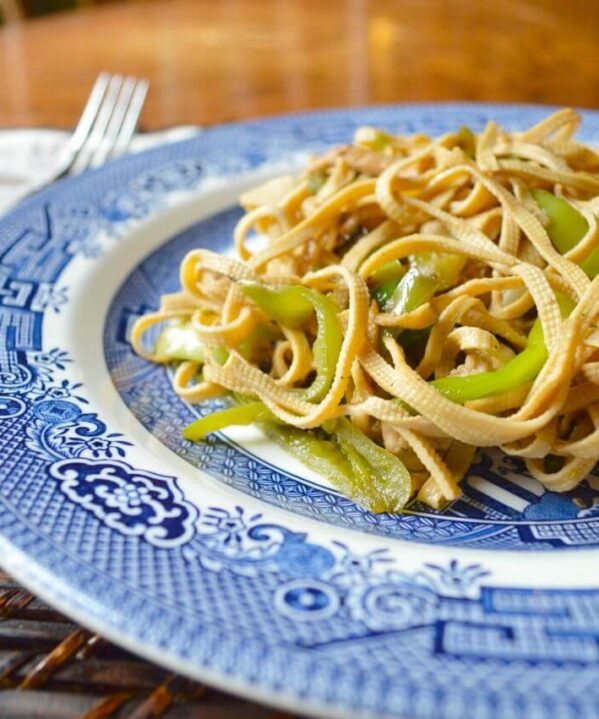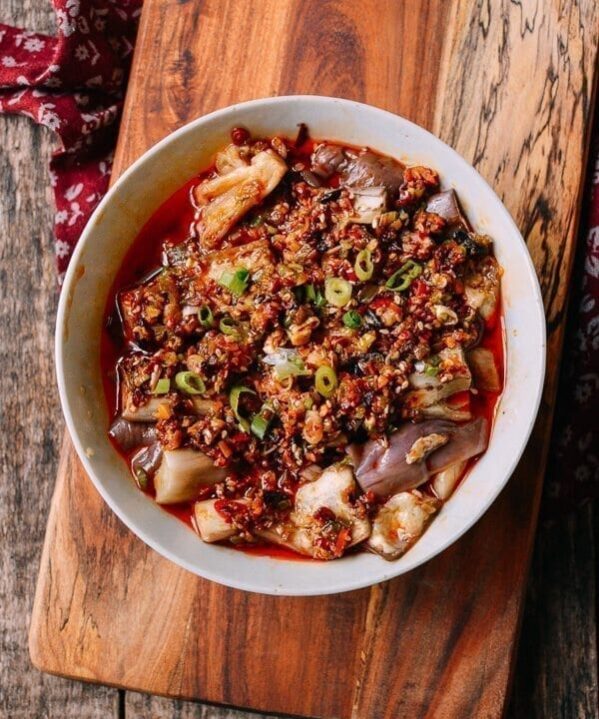Spicy Hunan Steamed Tofu and Mushrooms is made by caramelizing oyster mushrooms, scattering them on top of silky steamed tofu, and pouring over a sauce of pickled duo jiao chili peppers, ginger, scallions, and lots of white pepper.
In short, it’s an incredibly flavorful, protein-filled, mushroom-meaty vegan dish that may just be better than its animal protein equivalent!
Surprised? Not more than we are…
A Vegan Version of One of Our Favorite Fish Dishes
Hunan-style Steamed Fish with spicy duo jiao pickled chili peppers is one of our family’s FAVORITE dishes. I know that sounds superfluous coming from a food blogger, but it truly is one of our all-time favorites, and we regularly make it at home and order it at our go-to Hunan restaurant.
While the fish is technically the star of the dish, I’d argue that the best part is the layer of fanned silken tofu underneath and the spicy duo jiao chili pepper mixture. We’re always scrounging for the last bits of tofu!
Update: This dish has been dubbed my multiple family members as just as good if not *preferable* to the original fish version! :O
Duo jiao is a key condiment in Hunan cuisine, made by fermenting chopped chili peppers in salt. The result is a salty, spicy, slightly tangy concoction that makes this sauce sing. It’s best with a bowl of rice and a big spoon.
I recently had a craving for this dish—but not for the fish…for the tofu! My solution? Steamed tofu and caramelized oyster mushrooms for meatiness, all with that same great duo jiao sauce. It’s not only vegan, it’s also super easy to make when you take the fish out of the equation.
A Vegan Recipe, Without Sacrifice
I’ve recently come to the conclusion that plant-based should be more than an occasional, fleeting lunchtime decision, and while I’m not fully committing to the vegan way of life (meat lovers out there, fret not!), we’re all trying to find more ways to reduce our meat intake.
The rough goal is to have at least 1-2 vegan meals per day, so I’m on the lookout for more vegan recipes like this that have great flavor and satisfying protein.
Between the health benefits, the environmental benefits, the ethical questions, and my nagging lactose intolerance (is it scandalous to be a food blogger and admit that on a bad day, pizza can be my worst enemy?), I’ve decided to make the plunge into a more vegan lifestyle.
I know there’s a small, but growing group of readers out there that are positively giddy right now, so keep on the lookout for more new vegan recipes from yours truly! In the meantime, let’s get that ‘fu!
Spicy Hunan Steamed Tofu: Recipe Instructions
Prepare your silken tofu by cutting it in half lengthwise and then slicing it crosswise into ½-inch slices. Use your knife or cleaver to transfer each half of the cut tofu to a large heatproof rimmed plate or shallow bowl (the dish should be deep enough to hold the steaming liquid and sauce). Lay the tofu on the plate so the pieces are fanned across either side. Sprinkle a pinch of salt evenly over the tofu.
Next, steam the tofu. Add 4 cups of cold water to a wok, place the tofu on a steaming rack inside, and cover the wok. (You can set up your steaming apparatus however you’d like. Check out our full article on how to set up a steamer, even without special equipment.)
Turn the heat to medium-high. The water should boil in about 7 minutes. After it has begun boiling, continue to steam for another 3 minutes––a total of 10 minutes.
When the tofu goes into the steamer, heat a skillet over medium-high heat. Add 1 tablespoon of oil to the pan and add the oyster mushrooms.
Season with salt to taste. Let them brown and caramelize—flipping them when they caramelize on one side.
When the tofu is done, turn the heat off, and carefully pour off the liquid that has pooled at the bottom of the plate. Arrange the caramelized oyster mushrooms over the top. Sprinkle the mushrooms and tofu evenly with ¼ teaspoon white pepper.
In a clean saucepan or wok set over low heat, add 2 tablespoons of oil and 1½ tablespoons minced ginger.
Cook for 1 minute, and then add the garlic and cook for another minute.
Add the duo jiao salted chilli peppers. Cook for 1-2 minutes. The oil should start turning red and fragrant. Next, add the white portions of the scallions. Give it a stir for another 10 seconds, and add 2/3 cup hot water, 1 tablespoon soy sauce, and ½ teaspoon sugar.
Let the liquid come to a boil, and turn it down to simmer. Stir in the green portion of the scallions, and take the pan off the heat. Immediately spoon the sauce evenly over the mushrooms and tofu, and serve!
Spicy Hunan Steamed Tofu & Mushrooms
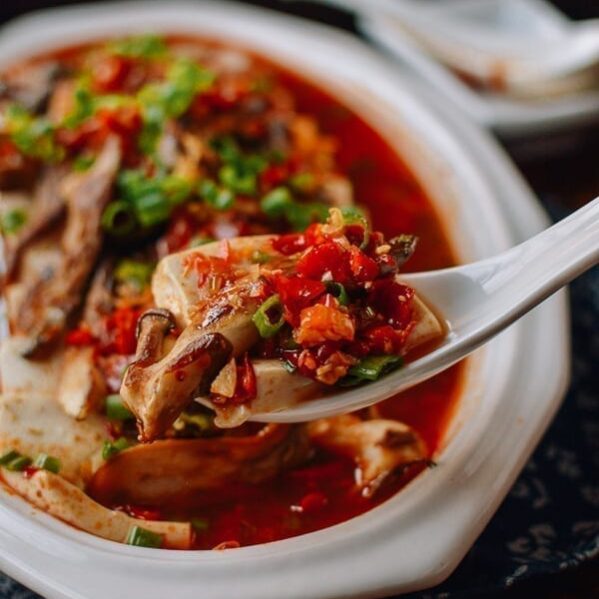
Ingredients
- 1 pound silken tofu (450g)
- salt (to taste)
- 1 tablespoon vegetable oil (plus 2 tablespoons, divided)
- 8 ounces oyster mushrooms (225g)
- 1/4 teaspoon white pepper (or to taste; the powder is ideal rather than freshly ground)
- 1 1/2 tablespoons ginger (minced)
- 3 cloves garlic (minced)
- 1-4 tablespoons duo jiao salted chili peppers (ranging from normal to crazytown, depending on how spicy you want it!)
- 2 scallions (finely chopped, with the white and green parts separated)
- 2/3 cup hot water
- 1 tablespoon soy sauce
- 1/2 teaspoon granulated sugar
Instructions
- Prepare your silken tofu by cutting it in half lengthwise and then slicing it crosswise into ½-inch slices. Use your knife or cleaver to transfer each half of the cut tofu to a large heatproof rimmed plate or shallow bowl (the dish should be deep enough to hold the steaming liquid and sauce). Lay the tofu on the plate so the pieces are fanned across either side. Sprinkle a pinch of salt evenly over the tofu.
- Next, steam the tofu. Add 4 cups of cold water to a wok, place the tofu on a steaming rack inside, and cover the wok. (You can set up your steaming apparatus however you’d like. Check out our full article on how to set up a steamer, even without special equipment.)
- Turn the heat to medium-high. The water should boil in about 7 minutes. After it has begun boiling, continue to steam for another 3 minutes––a total of 10 minutes.
- When the tofu goes into the steamer, heat a skillet over medium-high heat. Add 1 tablespoon of oil to the pan and brown the oyster mushrooms. Season with salt to taste. Let them brown and caramelize—flipping them when they caramelize on one side.
- When the tofu is done, turn the heat off, and carefully pour off the liquid that has pooled at the bottom of the plate. Arrange the caramelized oyster mushrooms over the top. Sprinkle the mushrooms and tofu evenly with ¼ teaspoon white pepper.
- In a clean saucepan or wok set over low heat, add 2 tablespoons of oil and 1½ tablespoons minced ginger. Cook for 1 minute, and then add the garlic and cook for another minute.
- Add the duo jiao salted chilli peppers. Cook for 1-2 minutes. The oil should start turning red and fragrant. Next, add the white portions of the scallions. Give it a stir for another 10 seconds, and add 2/3 cup hot water, 1 tablespoon soy sauce, and ½ teaspoon sugar.
- Let the liquid come to a boil, and turn it down to simmer. Stir in the green portion of the scallions, and take the pan off the heat. Immediately spoon the sauce evenly over the mushrooms and tofu, and serve!
